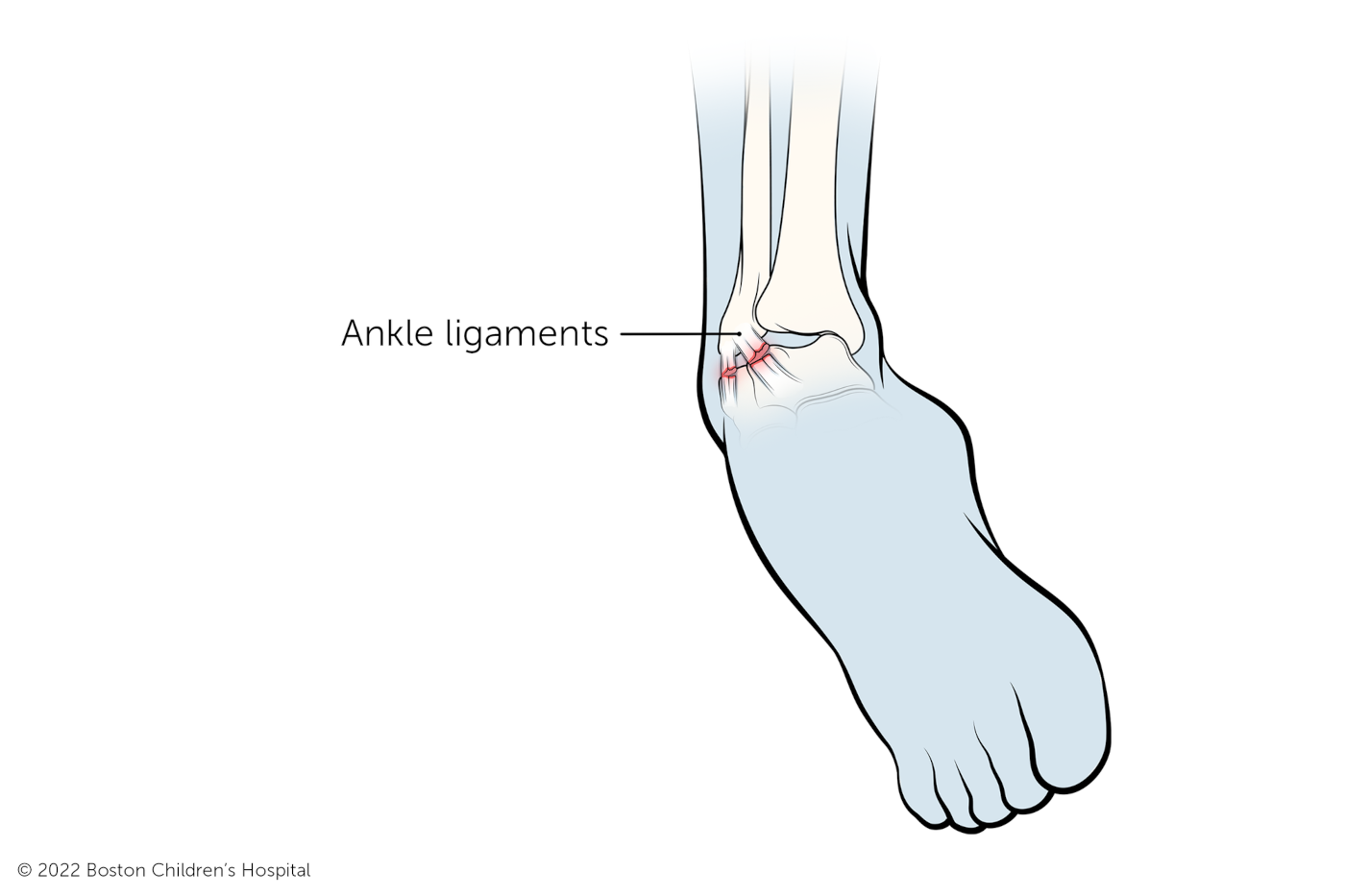Breadcrumb
- Home
- Conditions & Treatments
- Ankle Sprains
What is an ankle sprain?
Ankle sprains happen when the ligaments that support the ankle are stretched or torn. Most sprained ankles are caused by sudden movements that twist the ankle or cause the foot to roll over. This type of injury is common in children and young athletes.

Symptoms & Causes
What are the symptoms of a sprained ankle?
If your child has a sprained ankle, they may experience:
- Ankle pain when standing or walking
- Swelling and bruising
- Limited range of motion
- Tenderness when touching the ankle
What are the causes of sprained ankles in kids and teens?
Sudden or twisting movements that overstretch the ligaments are the main cause of sprained ankles.
Sprained ankles are common in sports that require quick changes in direction, such as basketball, soccer, and football. Walking or running on an uneven surface can also lead to an ankle sprain.
Ankle sprains can happen when children and athletes:
- Twist or roll their ankle
- Jump or land awkwardly
Diagnosis & Treatments
How are sprained ankles diagnosed?
A sprained ankle can be diagnosed by your child’s doctor, a sports medicine specialist, or an orthopedic doctor.
The diagnosis may include:
How are sprained ankles treated in children and young athletes?
The goal of treatment is to restore ankle strength, flexibility, and balance so your child can return to sports and other activities at a low risk of re-injury.
Most sprained ankles can be treated at home with rest, ice, compression, and elevation.
- After a period of rest, your child can begin gentle exercises to restore their ankle’s motion and flexibility.
- Once 60 to 70 percent of ankle motion has returned, your child can begin light strengthening exercises using a resistance band.
- Before exercise, soak the ankle in warm water to loosen up the tissues.
- After exercise, ice the ankle to prevent swelling or irritation. Be sure to wrap ice in a towel or dish cloth to protect the skin.
If your child has a more severe ankle sprain, they may need to use crutches while the ligaments heal. In rare cases, severe ankle sprains require surgery to repair torn ligaments.
When is it safe to return to sports after a sprained ankle?
This depends on how severely your child’s ankle was sprained. To avoid further injury, it’s important your child can meet these goals before returning to sport:
- Full ankle range of motion in all directions (up and down, side to side)
- Muscle strength and stability
- Balance
- No pain or swelling with activity
Why choose Boston Children’s Hospital for your child’s sprained ankle?
Our team in the Sports Medicine Division helps children and young athletes remain active in the activities they love. As the largest and most experienced pediatric and young adult sports medicine practice in the country, we help young athletes recover from a wide range of sports injuries.
The Micheli Center for Sports Injury Prevention, part of the Sports Medicine Division, offers rehabilitation and strength training programs to help athletes return to sports stronger and lower risk of future injury.





